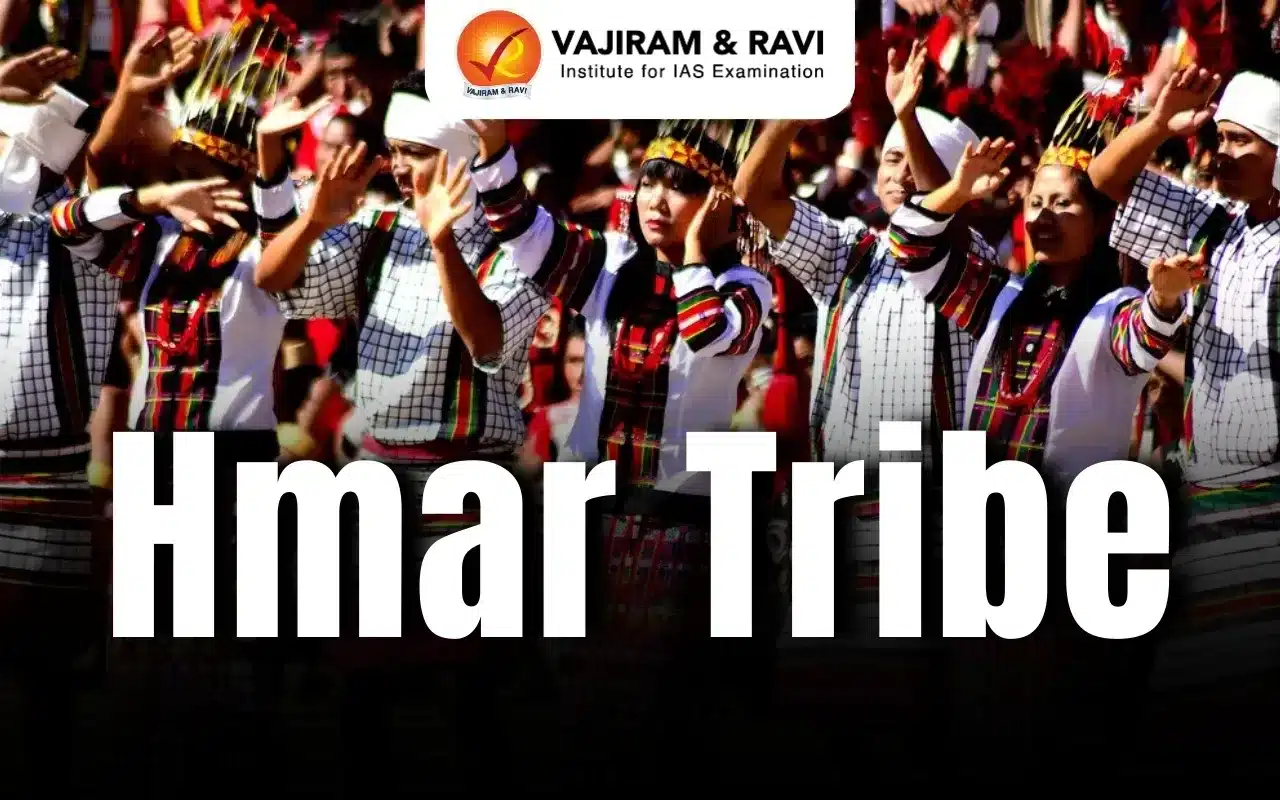Hmar and Zomi Tribes Latest News
A day after the imposition of restrictions following clashes between the Hmar and Zomi people in Manipur, leaders of the two communities recently agreed to work together to restore peace in Churachandpur district of the State.
About Zomi Tribe
- The word Zomi is used to describe an ethnic group, which is also known as the Chin, the Mizo, the Kuki, or a number of other names based on geographic distribution.
- They belong to the Tibeto-Burman group of Mongoloid race.
- Distribution:
- They are spread throughout the northeastern states of India, northwestern Burma, and the Chittagong Hill Tracts of Bangladesh.
- In northeastern India, they are present in: Nagaland, Mizoram, Manipur and Assam.
- Language: Natively, they speak one of the fifty or so languages that linguists call the Kukish language group, which is also known as Kuki-Chin (Kuki/Chin), Mizo/Kuki/Chin, or Kuki Naga.
- Religion and Beliefs: Traditionally, Zomis followed animism and worshiped nature spirits. Today, Christianity (mainly Baptist and Presbyterian) is the dominant religion.
- They have typical Tibeto-Burman features and are generally of short-stature with straight black hair and dark brown eyes.
About Hmar Tribe
- The Hmar tribe, also called Mhar or Mar, are the dwellers of the northeastern part of India.
- The word “Hmar” literally means “north”.
- They live in the northeastern states of Manipur, Assam, Mizoram, Megalaya, and Tripura.
- They belonged to the Chin-Kuki Mizo group of tribes. They are of Mongoloid stock.
- Hmar folk songs reveal that these people migrated from Sinlung, which is assumed to be in China.
- They are recognised as Scheduled Tribe under the Constitution of India.
- Language: The Hmar language belongs to the Kuki-Chin group of Tibeto-Burman stock of the great Tibeto-Chinese family of languages.
- Occupation:
- The majority of the Hmars were cultivators.
- The Slash-and-burn system of agricultural practices is still at large by the Hmar Tribe.
- Religion and Beliefs: Traditionally, they followed animistic and indigenous beliefs, but over time, many have converted to Christianity.
- Clans:
- The Hmar society is based on a clan system.
- Each clan had a dialect of its own, though nowadays a common dialect used by the Hmar people was developed by Christian missionaries.
- The chief of the village council is called “Lal“. Everybody follows his leadership and directive.
Hmar and Zomi Tribes FAQs
Q1. Where can we find the Hmar tribe?
Ans. They live in the northeastern states of Manipur, Assam, Mizoram, Megalaya, and Tripura.
Q2. What is the occupation of the Hmar tribe?
Ans. The majority of the Hmars were cultivators.
Q3. What is the religion of the Zomi tribe?
Ans. Christianity is the dominant religion of the Zomi tribe.
Source: TH
Last updated on November, 2025
→ Check out the latest UPSC Syllabus 2026 here.
→ Join Vajiram & Ravi’s Interview Guidance Programme for expert help to crack your final UPSC stage.
→ UPSC Mains Result 2025 is now out.
→ UPSC Notification 2026 is scheduled to be released on January 14, 2026.
→ UPSC Calendar 2026 is released on 15th May, 2025.
→ The UPSC Vacancy 2025 were released 1129, out of which 979 were for UPSC CSE and remaining 150 are for UPSC IFoS.
→ UPSC Prelims 2026 will be conducted on 24th May, 2026 & UPSC Mains 2026 will be conducted on 21st August 2026.
→ The UPSC Selection Process is of 3 stages-Prelims, Mains and Interview.
→ UPSC Result 2024 is released with latest UPSC Marksheet 2024. Check Now!
→ UPSC Prelims Result 2025 is out now for the CSE held on 25 May 2025.
→ UPSC Toppers List 2024 is released now. Shakti Dubey is UPSC AIR 1 2024 Topper.
→ UPSC Prelims Question Paper 2025 and Unofficial Prelims Answer Key 2025 are available now.
→ UPSC Mains Question Paper 2025 is out for Essay, GS 1, 2, 3 & GS 4.
→ UPSC Mains Indian Language Question Paper 2025 is now out.
→ UPSC Mains Optional Question Paper 2025 is now out.
→ Also check Best IAS Coaching in Delhi

















